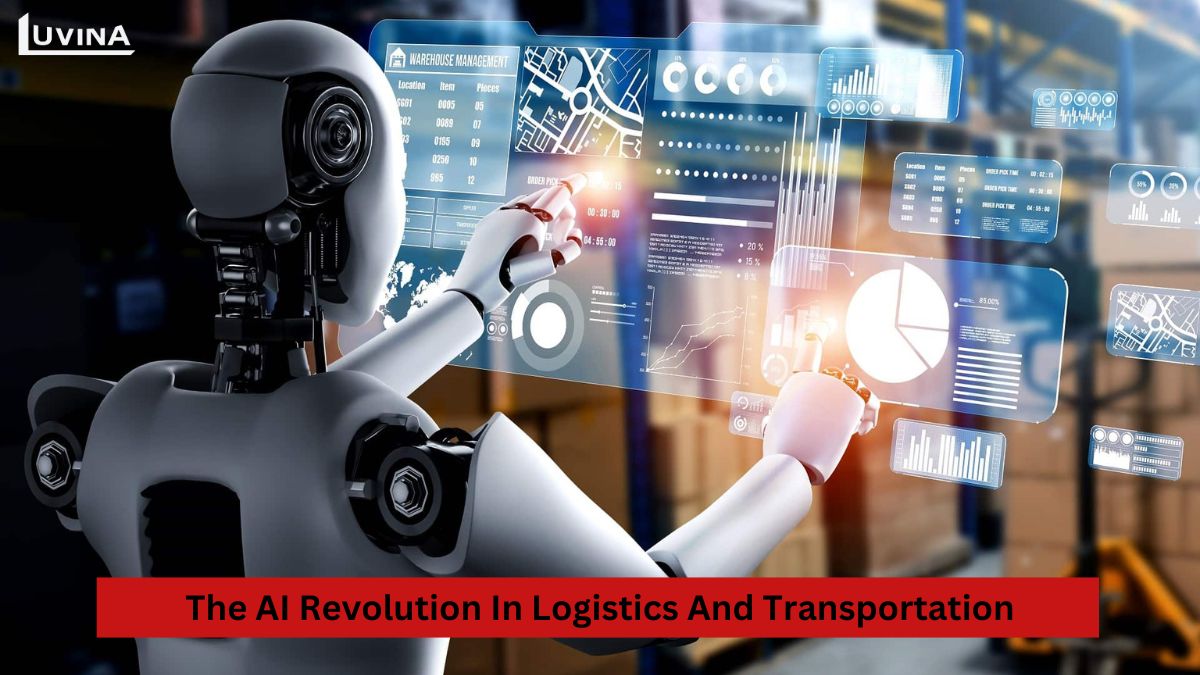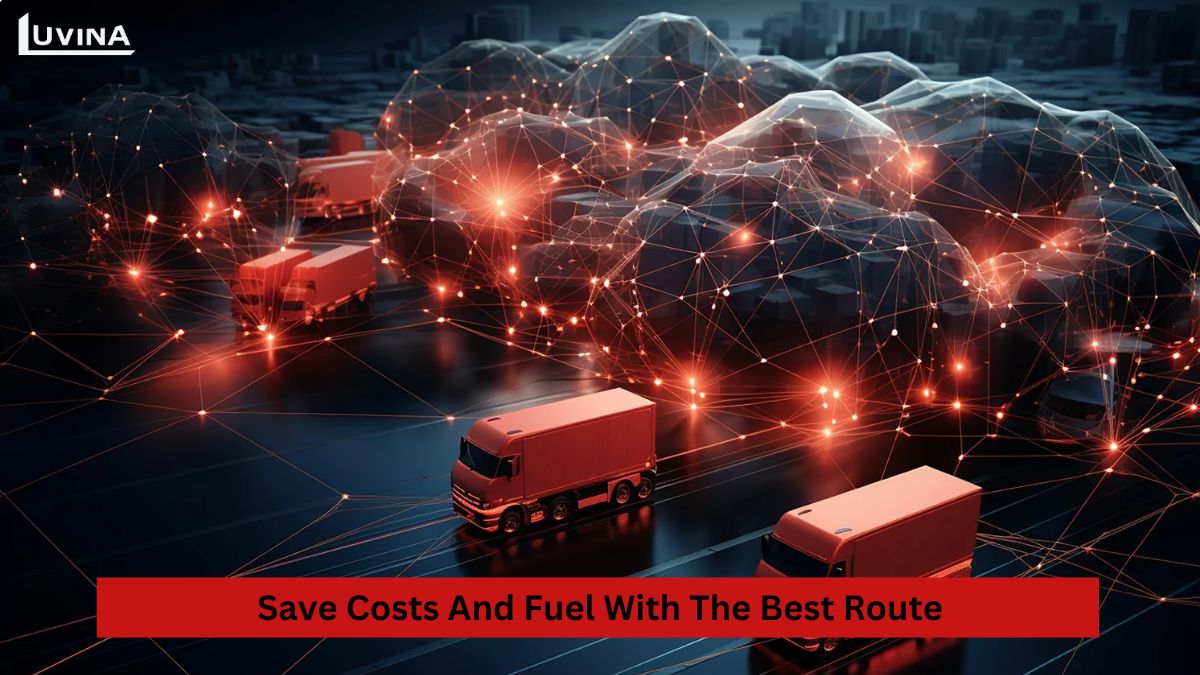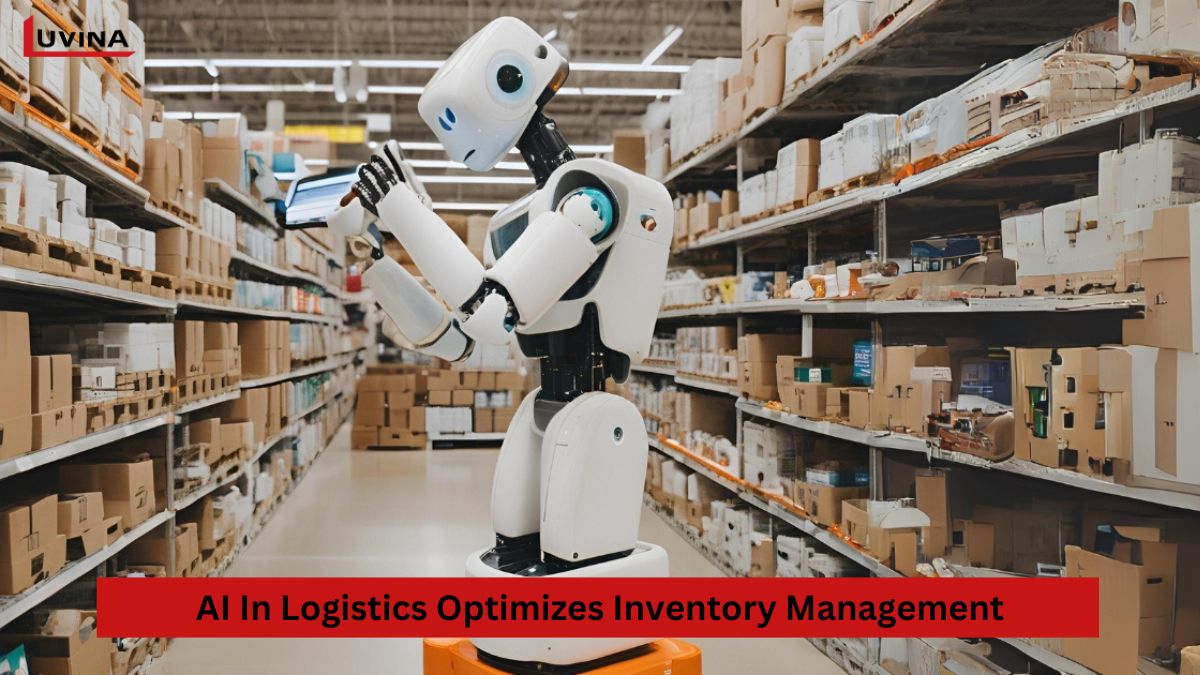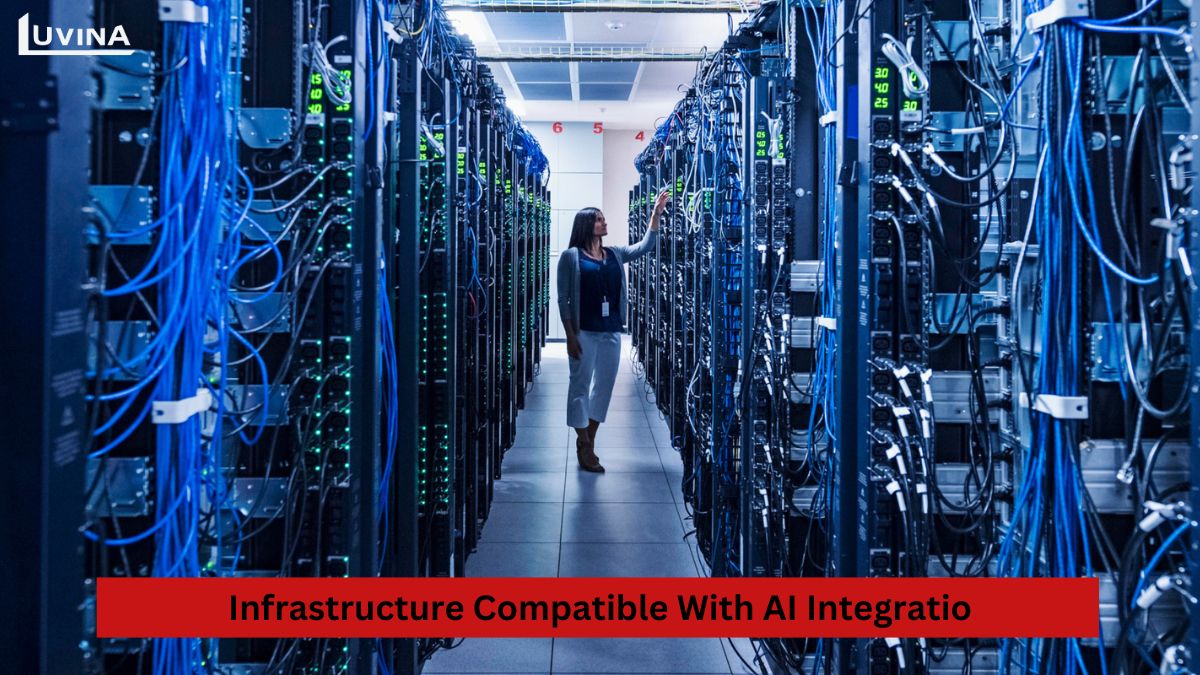According to estimates, if AI in logistics is properly integrated into processes, logistics companies could create economic value of $1.3 to $2 trillion each year over the next 20 years. Right now, pioneering businesses that adopt it early are enjoying profits of over 5%. So, what exactly will AI in logistics and supply chain bring, and how can it be applied in the industry? Let’s continue reading this article to see how AI is changing the logistics and transportation sectors, as well as to learn how your company can start using AI today.
Role of AI in Logistics and Transportation
A few years ago, artificial intelligence (AI) was never seen as a strong enough technology to tackle all the complex aspects of transportation and logistics. However, today, AI in logistics is being recognized as one of the game-changing factors that help businesses prepare for various uncertainties.
The ultimate role of AI in logistics is to smoothen the entire order processing, inventory management, supply chain, and distribution operations with customer experience in mind. AI leverages big data that emanates from the logistics processes and automates mundane tasks, reduces costs, innovates new functions, and increases efficiency. In addition, artificial intelligence in logistics will hasten the pace of data analysis so that a business can make more intelligent and clear-cut decisions, hence improving operational efficiency.

Overall, the use of AI in logistics is becoming increasingly necessary in the fast-growing and dynamic business environment today. However, it’s important to note that the use of AI in logistics is not the right solution for every strategy.
According to a forecast from McKinsey, implementing AI in logistics could reduce supply chain errors by 20% to 50%. At the same time, warehousing costs could decrease by 5% to 10%, and management costs could drop by 25% to 40%. Apart from cost savings and a decrease in error rates, AI in logistics and transportation further involves route planning optimization, efficient inventory management, reduction in the wastage of resources, and automation of manual processes so that employees can concentrate on strategic work activities.
Application of AI in Logistics and Transportation
AI in logistics is revolutionizing how logistics and supply chains operate, bringing significant breakthroughs to the industry in the era of Industry 4.0. From optimizing warehouses to fine-tuning delivery routes and analyzing forecasts, global AI logistics is leading the way in making substantial advancements. Below are some specific applications of AI in supply chain and logistics, or in other words, notable examples of how this technology is being used in the logistics and supply chain sectors.
1. AI in route optimize
We all use Google Maps to find the most efficient way to get from point A to point B. Opening Google Maps has become an automatic action when we get in the car and need to travel to a new destination. A similar approach can be applied to logistics but on a larger scale.
Until now, route optimization in logistics was done manually, which could mean inefficiency or added cost. However, the presence of AI in logistics is significantly improving this process. AI uses advanced algorithms to analyze variables related to road conditions, fuel consumption, and weather, among others and considers the actual delivery points in finding and determining the most ideal delivery routes. For instance, AI in supply chain and logistics can be utilized to analyze real-time traffic data in order to identify routes congested at the time and plot the fastest path for delivery vehicles.

With this application, AI in transportation and logistics not only helps reduce travel time and costs for businesses but also lowers harmful carbon emissions. Additionally, the AI systems can reroute materials at any instance in real-time in response to any event or disruption to fulfill the standards for delivery.
A prime example of logistics and AI is DHL, a global logistics provider. This company is currently using AI-supported route planning software to improve its shipping process. Their system can analyze all delivery points on a route, prioritize them, and arrange them based on urgency, such as important medical deliveries or those that need to arrive before 9 a.m. or within 10 hours. At the same time, DHL’s system also considers the distances between stops to create the most efficient route. DHL shares that AI in logistics has allowed them to deliver faster while consuming less fuel, all while their customers benefit from timely deliveries.
2. AI in order fulfillment
Using artificial intelligence in logistics to complete the order process will help streamline warehouse operations and improve order accuracy. Here are some AI in logistics examples that support the order fulfillment process:
- – AI and ML in logistics analyze data to forecast inventory levels, manage reordering, and minimize overstock and stockouts.
- – Robotics technology automates warehouse processes, significantly reducing human errors, speeding up workflows, and improving warehouse safety.
- – Smart analytics provide insights into customer behavior and order patterns to forecast and manage inventory more accurately.
These are just a few of the many basic ways that AI for logistics can assist in order management.
3. AI in inventory management
With any business operating in the e-commerce sector, inventory management is one of the most important tasks because it will determine the success of the business. However, it is also one of the most challenging tasks to carry out, especially for those companies that have to handle a large volume of inventory.
For an e-commerce business, there is nothing worse than having a warehouse full of unwanted items while hot items are out of stock. This problem arises from traditional businesses having to guess about products, leading to increased inventory levels. This is where AI in logistics plays a game-changing role.

Traditionally, inventory decisions at companies were done by counting the actual stock, manually putting that information into a database to track inventory levels, and then manually reordering stock when levels got low. These processes take time and are prone to human errors; on top of that, they may not show real-time insight either. Meanwhile, AI in the logistics industry helps e-commerce businesses make better inventory decisions by automating many related manual processes.
Artificial Intelligence breaks down large volumes of incoming data from the point-of-sale system, sales data, historical data, and supplier data into an intelligent outcome for inventory levels and demand. This helps a business adjust inventory accordingly, avoiding an overstock or running out of items. This will help reduce storage costs and shorten the times related to order fulfillment.
4. AI in automated warehousing
The applications of artificial intelligence in logistics and supply chains can be found in automated warehouses and smart warehouses. In the 4.0 Era, warehouses are currently operating with automation through the integration of AI in logistics and Internet of Things (IoT) technologies. For example:
- – AI-powered robots take on tasks previously handled by humans, such as sorting and transporting goods, helping to minimize errors and optimize space usage.
- – AI and ML in logistics adjust the organization of inventory based on demand.
- – Computer vision technology ensures high accuracy in tracking.
Artificial intelligence in logistics and supply chain management will bring several notable benefits to businesses in the modern e-commerce sector:
- – Safe and easy automated operations.
- – Low operating costs and high stability.
- – Flexible control, effectively responding to customer demand.
- – Increased storage capacity.
Thanks to logistic intelligence, the warehouse landscape of logistics is gradually moving from a labor-intensive, manually operated operation to highly efficient automated processes that are technologically advanced.
>> Read more: AI in warehouse management
5. Demand forecasting
The logistics industry relies heavily on data, and the presence of AI in logistics is significantly improving demand forecasting in logistics. Predictive analytics enabled AI to combine various factors including weather patterns, regional events, and more, to yield very accurate forecasting of demand in the future. That is good for businesses to drive costs down, enable better supply chain management, and improve customer satisfaction. Additionally, artificial intelligence in logistics learns continuously from new data, enhancing the accuracy of the forecasts, thus changing the speculative nature of demand forecasting to a data-driven science.

Amazon is a prime example of the importance of the application of artificial intelligence in logistics. The company analyzed more than 152 million customer data insights in terms of buying behavior, thus allowing the company to suggest relevant products in line with the personal preferences and purchase history of the customers.
How Logistics Companies Can Start AI Adoption
Determining if a business is ready to implement its operations can be a big challenge. This challenge is also why many businesses hesitate to apply AI in logistics. However, there are many effective ways to approach the use of AI in logistics. So, if you are ready for the digital transformation process and want to gain a competitive advantage in the market, you can follow some tips below to simplify the integration of AI.
1. Recognizing key obstacles
Before applying artificial intelligence in logistics, a business needs to identify its main barriers. These barriers may include having outdated systems, a lack of talent, inflexible approaches, or insufficient budgets. Here are some signs that show your company really needs to apply AI in transport logistics:
- – Continuous high costs due to the current system being inefficient.
- – Frequent delays in delivery due to inefficient route planning and no analysis of real-time data.
- – Unable to adapt to the fluctuating market conditions.
- – Many processes like picking, packing, and shipping are done manually, leading to low efficiency.
- – Unable to predict the demand and market trends with high precision; hence, overall productivity is affected.
Recognizing and accepting these indications and challenges will be a huge first step for the company to integrate AI into transportation logistics. If financial issues are the main concerns, then look for solutions that are friendly to the economy, or initiate partial transformation processes instead of transforming all the processes into AI at once. If the obstacle is related to skill gaps, invest in training employees about AI or hire outside experts to perform development tasks.
2. Evaluating and choosing solutions
Once you have identified the issues that need to be solved, try to reevaluate your activities to identify the applications of artificial intelligence in logistics and supply chain. For example, a business can start by applying AI in inventory management. Once you know which part of the operation you want to change, research and compare different solutions. During the research and comparison, pay attention to factors like functionality, features, costs, and scalability. Then, develop a POC (Proof of Concept) as an AI pilot project to assess the effectiveness and suitability of the solution.

3. Planning and strategies for integrating AI in transportation logistics
Clear planning will determine whether the implementation of AI is successful or not. Experts say you should go about it in phases. This is the most effective while being the least risky. For example, begin with a POC much like the one mentioned above.
Based on the results from the POC, you can evaluate the performance of the selected AI for logistics solutions or identify areas that need improvement. In the initial phase of gathering experiences, the support of a team with professional experts will go a long way in being quite helpful. Seek out and work with prominent providers of AI solutions to gain the skills and experience required for artificial intelligence and logistics.
4. Upgrading infrastructure and preparing expertise
The business’s infrastructure needs to be suitable for integrating artificial intelligence in logistics transportation. Upgrading infrastructure may include steps like purchasing advanced hardware, installing AI-compatible software, implementing strong data security measures, and ensuring seamless data conversion.
Additionally, an important factor before integrating AI in logistics is expertise. Readiness in expertise requires you to assemble a team of specialists, each with unique skills to connect AI initiatives with business goals, while also developing suitable solutions. If expertise is ensured, AI logistics companies can maximize the benefits of AI and achieve smooth integration.

Conclusion
Artificial intelligence can be seen as a formidable new force in the logistics industry, bringing amazing opportunities for change. By implementing the applications of artificial intelligence in logistics and supply chain, businesses can reap rewards and maintain a pioneering role compared to their competitors.
Hopefully, this article helped you broaden your understanding of AI in logistics and transportation, its place within these industries, its applications, and how a company in the field of logistics can slowly inject AI into its business processes. For detailed answers to questions about AI in logistics, please contact Luvina.
Related Posts:









Read More From Us?
Sign up for our newsletter
Read More From Us?
Sign up for our newsletter